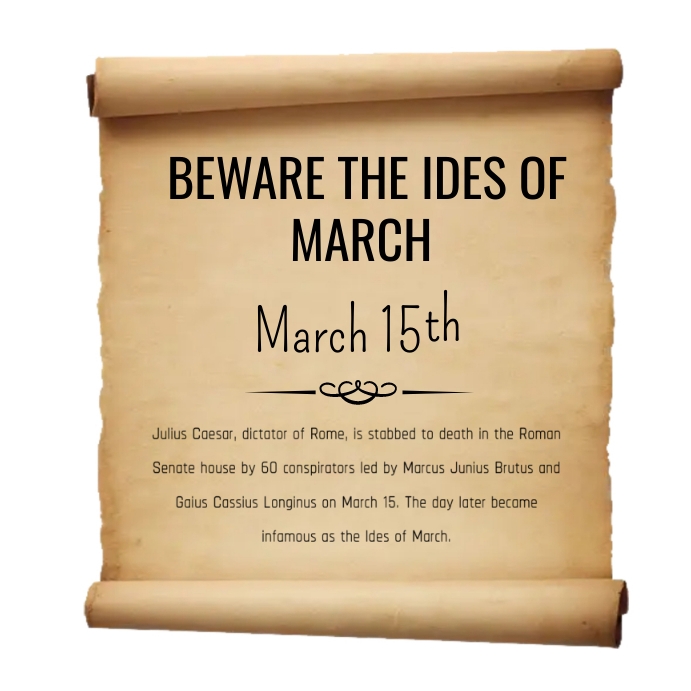|
Reply |
Message 1 of 250 on the subject |
|
LA LANZA DE LONGINO.-FUERTE RELACION ESOTERICA CON EL SANTO GRIAL
Éxodo 15:3: Jehová es varón de GUERRA; Jehová es su nombre.
Versiculo en contexto al EXODO DE EGIPTO y al cantico de MARIA Y MOISES. ES OBVIO EL NEXO DE LA TORA DE EGIPTO CON EL PLANETA MARTE.
153=MARIA LA MAGDALENA
En Babilonia fue el cuento Solar de la diosa-pez Derceto/Atargatis con el dios Oannes/Joannes, también incluyendo a Nammu y Tiamat. En el cuento Bíblico, como Jesús, nacido de María, de donde viene Marino, o donde viene el agua se le envió a través de Oannes/Jonah, quien alegóricamente hizo la misma hazaña dentro del Útero/Tumba del Mamífero marino más grande del mundo.
Yahweh concluyó igualmente en el Antiguo Testamento, subyugando a la Serpiente marina Leviatán ( “Ballena" en hebreo). La sediciosa evolución del historiador natural, Charles Darwin también dio énfasis a esta creencia implicando que el útero gestante del acuoso gestando era igualmente interdependiente de los ritmos  lunares de las mareas, vinculando nuestra herencia y orígenes al mar. lunares de las mareas, vinculando nuestra herencia y orígenes al mar.
"porque, cuando Jonás estaba en la barriga del pez tres días y tres noches, así el Hijo de Hombre estará en el corazón de la tierra tres días y tres noches".
- Mateo12:40
Como acompañado por la historia del pez de Jesús, ayudando milagrosamente a sus discípulos a hacer una captura de 153 peces, este mismo hecho también es extrañamente logrado por Pitágoras quinientos años más temprano en una antigua leyenda registrada por el neo-platonista Porfirio. El propio Pitágoras prediciendo el número exacto de peces a ser cogidos, con el número 153 siendo un número sagrado Pitagórico, asociado con el "Vesica Piscis" o "Envase del Pez ".
GUERRA/ MARTE / MARTILLO / MARCOS
¿PORQUE LA DIVINIDAD DISEÑO CON ESTE DISEÑO GEOMETRICO LOS DOS OJOS QUE TENEMOS? ¿QUE MENSAJE NOS QUIERE DAR YHWH? VESICA PISCES TIENE RELACION CON EL NUMERO 153.
EL 15/3 EN LA IGLESIA CATOLICA ES EL DIA DE SAN LONGINO
San Longinos fue el centurión que por órdenes de Poncio Pilato, estuvo con otros soldados al pie de la cruz de Nuestro Señor y el que traspasó su costado con ...
San Longinos, Mártir 15 de Marzo. San Longinios fue el centurión que por órdenes de Pilatos, estuvo con otros soldados al pie de la cruz de Nuestro Señor y el ...
Longino (santo)
De Wikipedia, la enciclopedia libre
San Longinos o Longino de Cesarea fue, según algunas tradiciones cristianas, el soldado romano que traspasó el costado del cuerpo de Jesús con su lanza; conocida como La Santa Lanza. El individuo no tiene nombre en los evangelios que relatan el hecho, pero suele identificarse con el centurión que, ante la muerte de Jesús, exclamara: “En verdad este era el Hijo de Dios”.[1] La leyenda de Longino se originó en la Baja Antigüedad y el Medioevo, agregando datos sobre su vida, su nacimiento en Lanciano, Italia, conversión al cristianismo y su muerte, hasta llegar a ser considerado un santo por la Iglesia Católica y otras comuniones cristianas.


Hay una obvia interrelacion de la LANZA DE LONGINO, CON LA SANGRE DE CRISTO, OSEA EL GRIAL MISMO. En funcion a EXODO 15:3 en el contexto a que JEHOVA ES LA GUERRA/MARTE es obvio la interrelacion del rojo/sangre/Longino. ¿Porque justo en la IGLESIA CATOLICA EL SANTORAL DE dicho santo es el 15/3 o 15/MARZO=MARTE? Porque le insisto amigo. YHWH NO TIRA LOS DADOS. ESTA TODO CODIFICADO.
El gran error de la tradicion religiosa es la DEMONIZACION DE LA CULTURA EGIPCIA cuando observamos que en la misma esta el secreto del GRIAL. Es que MARIA LA MAGDALENA SIMBOLIZA a todas las naciones gentiles demonizadas por la tradicion religiosa, aunque en este aspecto la IGLESIA CATOLICA ES LA MAS DESARROLLADA. LOS PROTESTANTES SON MAS FARISEOS EN ESTE CONTEXTO.
LA CLAVE DE LA LANZA DE LONGINO EN UN CONTEXTO KAVALISTICO ESTA EN SU INTERRELACION MATEMATICAS CON LA ASUNCION DE LA VIRGEN. El 15/3 es el dia numero 74 del calendario gregoriano y si le sumamos justamente dicho numero llegamos al 227, que es justamente insisto, el 15/8, osea el dia que la iglesia catolica, por su origen egipcio, determino la ASUNCION DE MARIA que en realidad es MARIA LA MAGDALENA. No descarto que TEOLOGOS DE ALTO RANGO DEL CATOLICISMO SEPAN QUE MARIA EN REALIDAD ES LA ESPOSA DE CRISTO. ¿EL MUNDO ESTA PREPARADO PARA ESTE TIPO DE PREDICA?
JUAN MARCOS/
MARTE/MARTILLO/GRIAL
|
|
|
|
Reply |
Message 236 of 250 on the subject |
|
March 1933 German federal election
March 1933 German federal election
| Registered |
44,685,764 ( 0.7%) 0.7%) |
| Turnout |
88.7% ( 8.1pp) 8.1pp) |
| | First party | Second party | Third party |
| |
|
|
|
| Leader |
Adolf Hitler |
Otto Wels
Arthur Crispien
Hans Vogel |
Ernst Thälmann |
| Party |
NSDAP |
SPD |
KPD |
| Last election |
33.1%, 196 seats |
20.4%, 121 seats |
16.9%, 100 seats |
| Seats won |
288 |
120 |
81 |
| Seat change |
 92 92 |
 1 1 |
 19 19 |
| Popular vote |
17,277,180 |
7,181,629 |
4,848,058 |
| Percentage |
43.9% |
18.3% |
12.3% |
| Swing |
 10.8 pp 10.8 pp |
 2.1 pp 2.1 pp |
 4.6 pp 4.6 pp |
|
| | Fourth party | Fifth party | Sixth party |
| |
|
|
|
| Leader |
Ludwig Kaas |
Alfred Hugenberg |
Heinrich Held |
| Party |
Centre |
DNVP |
BVP |
| Last election |
11.9%, 70 seats |
8.3%, 51 seats |
3.1%, 20 seats |
| Seats won |
73 |
52 |
19 |
| Seat change |
 3 3 |
 1 1 |
 1 1 |
| Popular vote |
4,424,905 |
3,136,760 |
1,073,552 |
| Percentage |
11.3% |
8.0% |
2.7% |
| Swing |
 0.6 pp 0.6 pp |
 0.3 pp 0.3 pp |
 0.4 pp 0.4 pp |
|
|
|
Federal elections were held in Germany on 5 March 1933, after the Nazi seizure of power on 30 January and just six days after the Reichstag fire. The election saw Nazi stormtroopers unleash a widespread campaign of violence against the Communist Party (KPD), left-wingers,[1]: 317 trade unionists, the Social Democratic Party[1] and the Centre Party.[1]: 322 They were the last multi-party elections in a united Germany until 1990.
The 1933 election followed the previous year's two elections (July and November) and Hitler's appointment as Chancellor. In the months before the 1933 election, SA and SS displayed "terror, repression and propaganda ... across the land",[1]: 339 and Nazi organizations "monitored" the vote process. In Prussia 50,000 members of the SS, SA and Der Stahlhelm were ordered to monitor the votes by acting Interior Minister Hermann Göring, as auxiliary police.[citation needed]
The Nazi Party (NSDAP) saw a large increase in votes and seats compared to the November 1932 election and gained a Reichstag majority together with its coalition partner, the German National People's Party (DNVP). This was the first time since 1930 that a governing coalition had held a parliamentary majority. However, despite waging a campaign of terror against their opponents, the Nazis only tallied 43.9 percent of the vote on their own, well short of a majority to govern alone.
This would be the last contested election held in Germany until after World War II. Despite now holding a bare working majority in the Reichstag, Hitler wanted more. Two weeks after the election, he was able to pass an Enabling Act on 23 March with the support of the Nazi Party, the DNVP and the Centre parties, which effectively gave Hitler dictatorial powers. Within months, the Nazis banned all other parties and turned the Reichstag into a rubberstamp legislature comprising only Nazis and pro-Nazi "guests".
 A police officer of Sicherheitspolizei (left) and an SS man and his German Shepherd (right), one of 50,000 Nazis in Prussia appointed by the Party as a " Hilfspolizei" ("Auxiliary Police") officer
 |
| |
Nazi Party |
17,277,180 |
43.91 |
+10.82 |
288 |
+92 |
| |
Social Democratic Party |
7,181,629 |
18.25 |
–2.18 |
120 |
–1 |
| |
Communist Party of Germany |
4,848,058 |
12.32 |
–4.54 |
81 |
–19 |
| |
Centre Party |
4,424,905 |
11.25 |
–0.68 |
73 |
+3 |
| |
Black-White-Red Struggle Front[a] |
3,136,760 |
7.97 |
–0.37 |
52 |
+1 |
| |
Bavarian People's Party |
1,073,552 |
2.73 |
–0.36 |
19 |
–1 |
| |
German People's Party |
432,312 |
1.10 |
–0.76 |
2 |
–9 |
| |
Christian Social People's Service |
383,999 |
0.98 |
–0.16 |
4 |
–1 |
| |
German State Party |
334,242 |
0.85 |
–0.10 |
5 |
+3 |
| |
German Farmers' Party |
114,048 |
0.29 |
–0.13 |
2 |
–1 |
| |
Agricultural League |
83,839 |
0.21 |
–0.09 |
1 |
–1 |
| |
German-Hanoverian Party |
47,743 |
0.12 |
–0.06 |
0 |
–1 |
| |
Socialist Struggle Community |
3,954 |
0.01 |
New |
0 |
New |
| |
Workers' and Farmers' Struggle Community |
1,110 |
0.00 |
0.00 |
0 |
0 |
| Total |
39,343,331 |
100.00 |
– |
647 |
+63 |
| |
| Valid votes |
39,343,331 |
99.21 |
|
| Invalid/blank votes |
311,698 |
0.79 |
|
| Total votes |
39,655,029 |
100.00 |
|
| Registered voters/turnout |
44,685,764 |
88.74 |
|
| Source: Gonschior.de |
|
|
|
|
Reply |
Message 237 of 250 on the subject |
|
In 1933, Hitler came to power and turned Germany into a dictatorship. How did the Nazi party come to power and how did Hitler manage to eliminate his opponents?
The weakness of the Weimar republic after WWI
Germany became a republic in 1919. After losing the First World War, Kaiser Wilhelm II abdicated. Many Germans were dissatisfied with the new situation. They longed for a return to the Empire. Many people also believed that the ruling social democrats were to blame for losing the war. Nevertheless, things started to look up from the mid-1920s onwards.
And then in 1930, the global economic crisis hit. Germany could no longer pay the war debts stipulated in the Versailles Peace Treaty. Millions of Germans lost their jobs. The country was in a political crisis as well. Cabinets were falling, and new elections were held all the time. It seemed impossible to form a majority government.
The rise of the NSDAP
This was the backdrop to the rise of the German National Socialist Workers' Party (NSDAP). When it was founded in 1920, it was only a small party. But Hitler used his oratory talent to attract more and more members. The party was characterised by extreme nationalism and antisemitism.
In November 1923, Hitler even led a coup attempt. It was a complete failure. Hitler ended up behind bars and the court banned the NSDAP. At the end of 1924, Hitler was released after serving a relatively short sentence. However, his political career was not over. In prison he had written Mein Kampf, setting out his plans for Germany.
From then on, the Nazis were to stick to the law and try to gain power by means of elections. They benefited from the economic crisis that began by the end of the 1920s. The Nazis used the crisis to condemn the government and the Versailles peace treaty. Their strategy was effective. In the 1928 elections, the NSDAP gained 0.8 million votes; in 1930, the number had increased to 6.4 million.
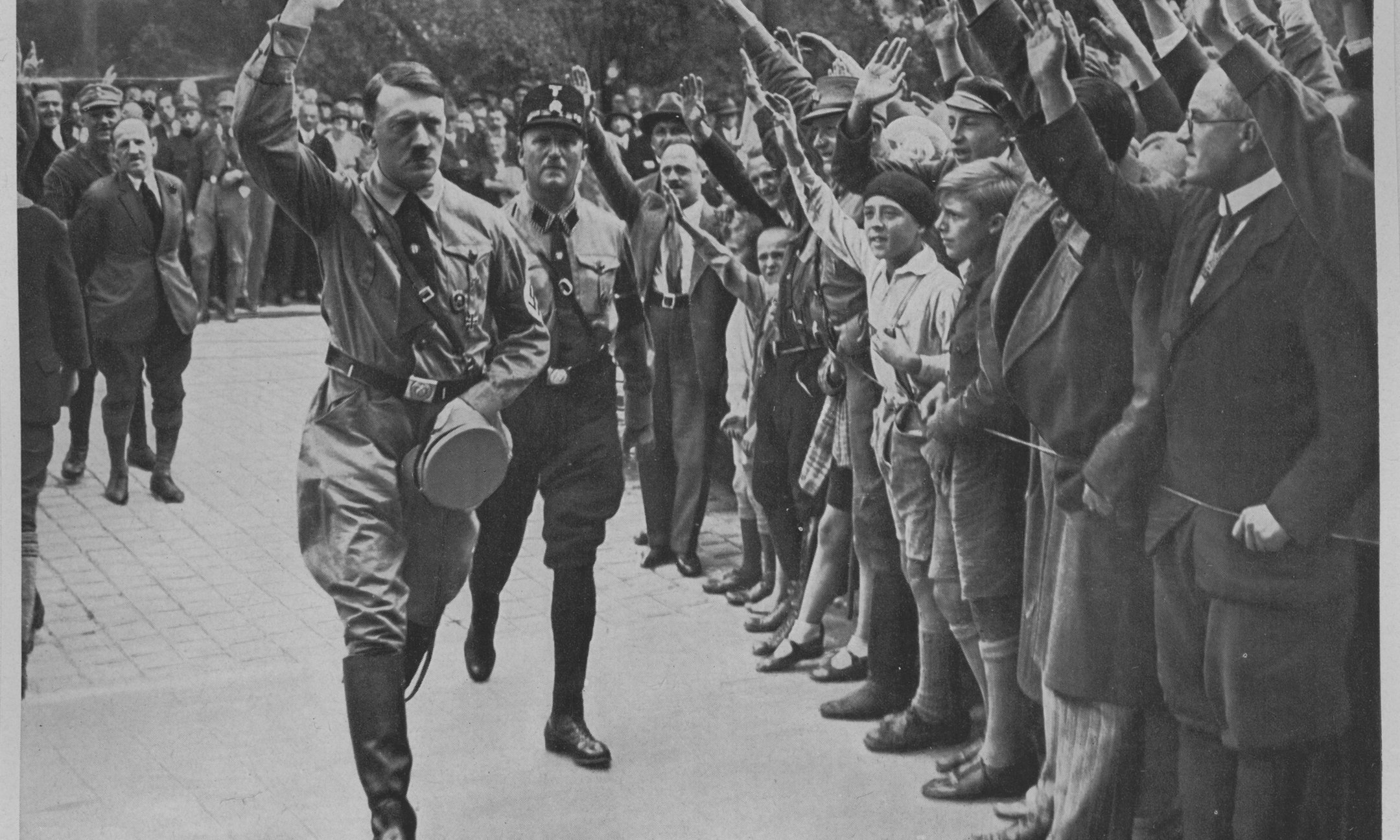
Adolf Hitler's followers greet him at a party conference in Neurenberg (1929). This and other pictures came with packets of cigarettes and were collected in special albums. This picture is from the series Deutschland erwacht [Germany awakes].
Anne Frank Stichting, Amsterdam/ Deutschland Erwacht
The appeal of the Nazis
The fact that many Germans were attracted by the NSDAP was not only because of their party programme. The party radiated strength and vitality. Moreover, the Nazi leaders were young, quite unlike the greying politicians of the established parties. In addition, Hitler's image as a strong leader appealed to people. He was all set to unite the population and put an end to political discord.
The Nazis focused on voters from all walks of life, rather than on just one group, such as the workers or Catholics. They also attracted many people who had never voted before. Still, in November 1932 the party seemed to be past its peak. The economy was recovering, and the NSDAP received 11% fewer votes than in the July elections earlier that same year.
Hitler appointed Chancellor
The conservative parties did not manage to win enough votes. They pressured president Paul von Hindenburg to appoint Hitler chancellor. They hoped to form a majority cabinet with the NSDAP. The fact that they expected to use Hitler for their own agenda would turn out to be a fatal underestimation.
30 January 1933 was the day: Von Hindenburg gave in and appointed Hitler chancellor. ‘It is like a dream. The Wilhelmstraße is ours', Joseph Goebbels, the future Minister of Propaganda, wrote in his diary. So, although Hitler was not elected by the German people, he still came to power in a legal way.
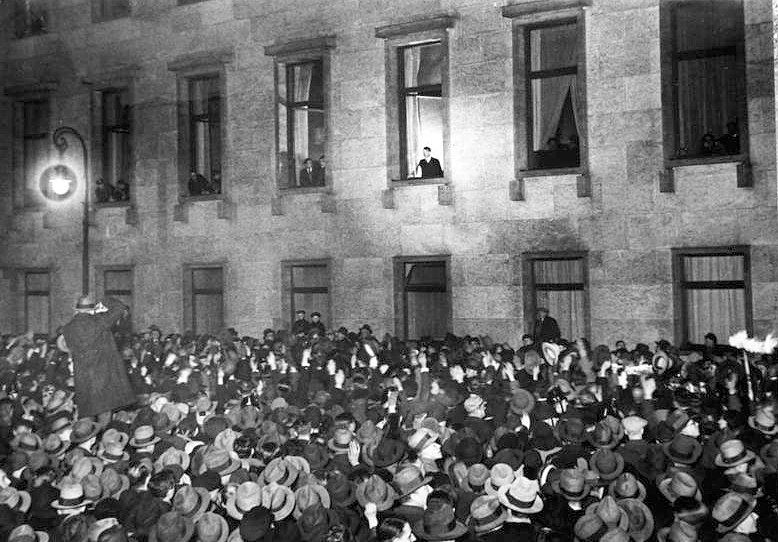
Adolf Hitler waves from the chancellery to the jubilant crowd. They celebrate his appointment as Chancellor of Germany.
National Socialist government: the Nazis share the power
The National Socialists celebrated their victory with a torchlight procession through Berlin. From the balcony of the chancellery, Hitler looked on approvingly. In spite of the glory, he was still far from being all-powerful at that point. The new cabinet counted only two NSDAP members, but Hitler succeeded in getting them appointed to important positions.
Hermann Göring’s role in particular was very important. He was a minister without portfolio who got to control the police force of Prussia, the larger part of Germany. For the Nazis, this was reason to celebrate their 'national revolution', but many Germans were indifferent to the news. They had seen many governments come and go and did not expect the new government to last any time at all.
Fire in the Reichstag: a first step towards the dictatorship
Before long, Hitler claimed more power. The fire in the Reichstag, the parliament building, was a key moment in this development. On 27 February 1933, guards noticed the flames blazing through the roof. They overpowered the suspected arsonist, a Dutch communist named Marinus van der Lubbe. He was executed after a show trial in 1934. Evidence of any accomplices was never found.
The Nazi leadership was quick to arrive at the scene. An eyewitness said that upon seeing the fire, Göring called out: ‘This is the beginning of the Communist revolt, they will start their attack now! Not a moment must be lost!' Before he could go on, Hitler shouted: 'There will be no mercy now. Anyone who stands in our way will be cut down.’
The next morning, President Von Hindenburg promulgated the Reichstag Fire Decree. It formed the basis for the dictatorship. The civil rights of the German people were curtailed. Freedom of expression was no longer a matter of course and the police could arbitrarily search houses and arrest people. The political opponents of the Nazis were essentially outlawed.
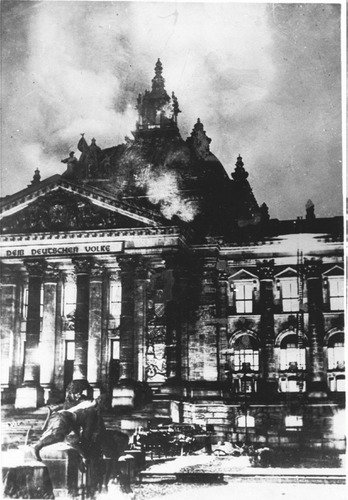
The Reichstag on fire (1933).
Collectieon: NIOD, Amsterdam (Beeldbank WO2) / photographer onbekend
Oppression of all opponents
In this atmosphere of intimidation, new elections were held on 5 March 1933. The streets were full of Nazi posters and flags. Nevertheless, the great victory hoped for by the Nazis did not materialise. With 43.9% of the votes, the NSDAP did not have a majority. The left-wing parties KPD and SPD together still got 30% of the votes.
Meanwhile, the arrests and intimidation were on the increase. The government banned the Communist Party. By 15 March, 10,000 communists had been arrested. In order to house all these political prisoners, the first concentration camps were opened. The circumstances in the camps were atrocious. People were ill-treated, tortured, and sometimes killed.
Jews and well-known Germans in particular had a rough time of it. SS guards at the Dachau camp, near Munich, for instance, took four Jewish prisoners outside the gates, where they shot them dead. The guards then claimed that the victims had tried to escape.
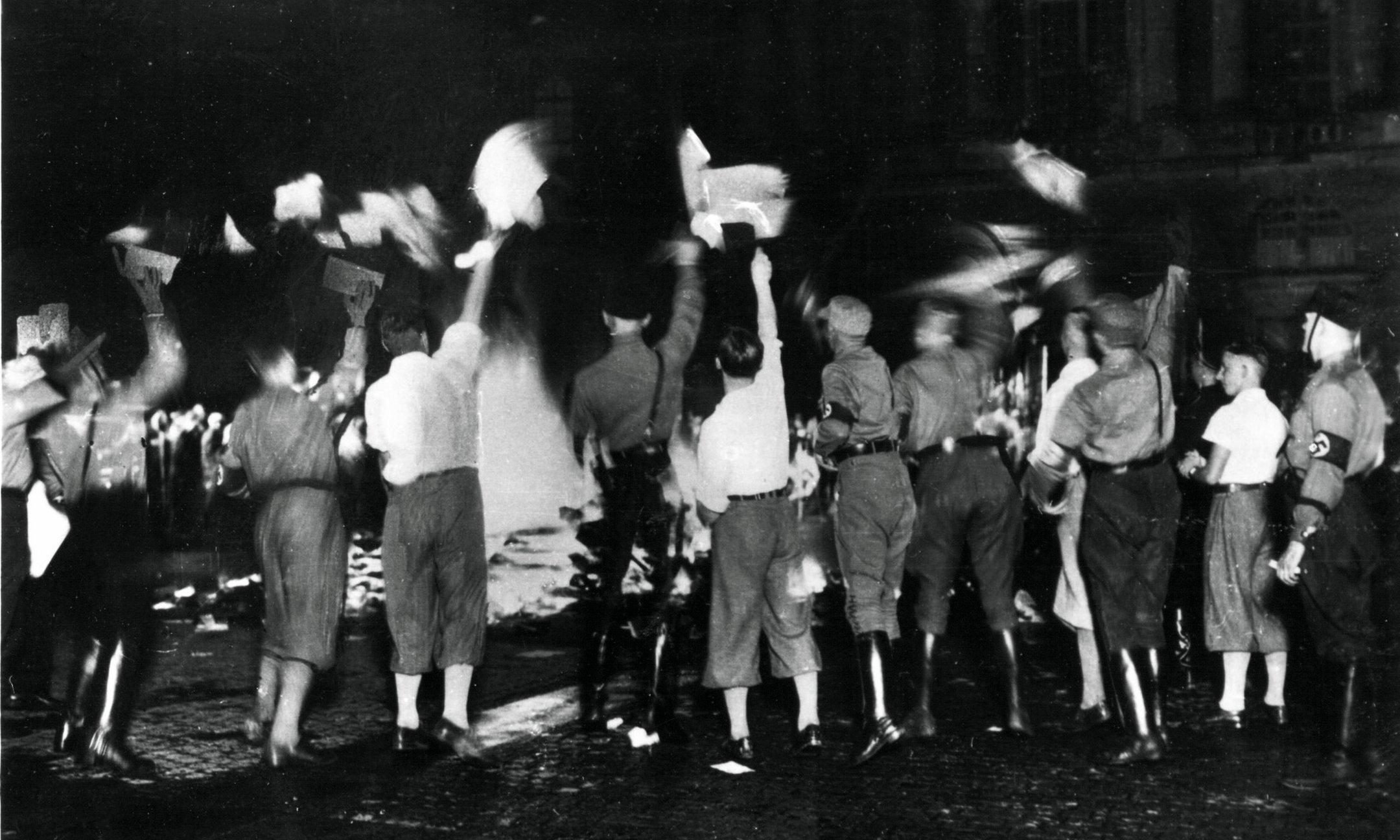
On 10 May 1933, students burn 'un-German' books on Opernplatz in Berlin. In other univerisity cities, students also burn books by writers like Karl Marx, Sigmund Freud and Erich Maria Remarque.
Collection: NIOD, Amsterdam (Beeldbank WO2) / photographer unknown
Hitler gains more power
On 23 March 1933, the Reichstag met in Berlin. The main item on the agenda was a new law, the 'Enabling Act'. It allowed Hitler to enact new laws without interference from the president or Reichstag for a period of four years. The building where the meeting took place was surrounded by members of the SA and the SS, paramilitary organisations of the NSDAP that had by now been promoted to auxiliary police forces.
In his speech, Hitler gave those present the choice between 'war and peace'. It was a veiled threat to intimidate any dissenters. The process was by no means democratic. With 444 votes in favour and 94 against, the Reichstag adopted the Enabling Act. It was to form the basis of the Nazi dictatorship until 1945.
Gleichschaltung of society
Now that Hitler had become so powerful, it was time for the Nazis to bring society in line with the Nazi ideal. The process was known as Gleichschaltung. Many politically-suspect and Jewish civil servants were dismissed. Trade unions were forcibly replaced by the Deutsche Arbeitsfront. This allowed the Nazis to prevent workers from organising any opposition.
All existing political parties were banned. From mid-July 1933 onwards, Germany was a single-party state. Cultural and scientific ‘cleansings’ were carried out as well.
According to the Nazis, everything ‘un-German' had to disappear. Books written by Jewish, left-wing, or pacifist writers were burned.
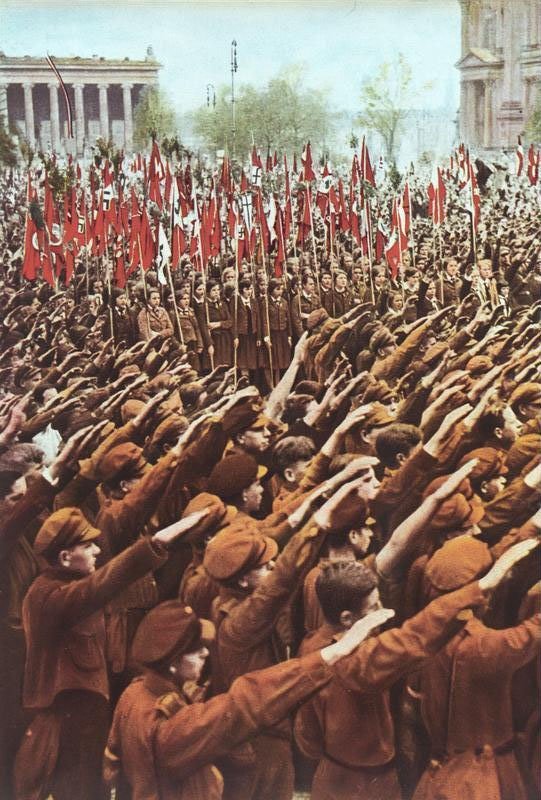
Members of the Hitlerjugend give the Nazi salute during a meeting in May 1933. The movement grows from 100,000 members in January 1933 to 4 million members in late 1935. In December 1936 the membership was made mandatory for the German youth.
Oppression of the Jews
While the Nazis took over, their destructive energy was mainly directed against their political opponents. The German Jews formed the exception. As a group, they did not oppose the ambitions of the Nazis. Nevertheless, they were the constant victims of violence, harassment, and oppression. As early as 1 April 1933, the government took official action against the Jews. It announced a major boycott of Jewish products. It was the first step in a series of anti-Jewish measures that would end in the Holocaust.
Hitler the autocrat
After taking power, Hitler and the Nazis turned Germany into a dictatorship. Time and again, they used legal means to give their actions a semblance of legality. Step by step, Hitler managed to erode democracy until it was just a hollow facade. Things did not end there, though. During the twelve years that the Third Reich existed, Hitler continued to strengthen his hold on the country.
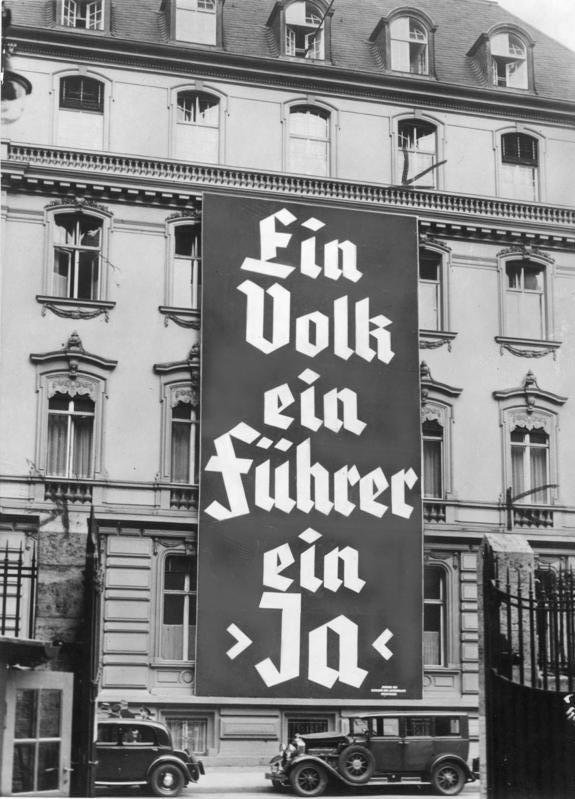
Election poster from November 1933. The text reads: "One people, one Führer, one 'yes'". In these unfree elections, 93.5% of the population says 'yes' to the government policy. Date: November 1933.
Literature
- Boterman, Frits, Moderne geschiedenis van Duitsland (Amsterdam: De Arbeiderspers, 2005, 2nd printing).
- Evans, Richard J., The Coming of the Third Reich (New York, NY: The Penguin Press, 2004).
- Friedländer, Saul, Nazi Germany and the Jews. Vol. I: The Years of Persecution, 1933-1939 (New York, NY: HarperCollins 1997).
- Hagen, William W., German History in Modern Times (Cambridge: Cambridge University Press 2012).
- Kitchen, Martin, Modern History of Germany: 1800 to the Present, (Chichester [etc.] : Wiley-Blackwell 2012, 2nd edition).
- Kershaw, Ian, Hitler, 1889-1945 (London : Allen Lane, 1998-2000).
- Longerich Peter, Hitler: Biographie (München: Siedler, 2015).
- Ullrich, Volker, Hitler. Vol. 1: Ascent, 1889-1939 (New York, NY: Alfred A. Knopf, 2016).
- Wachsmann, Nikolaus, KL: a history of the Nazi concentration camps (New York, NY: Farrar, Straus and Giroux, 2015).
https://www.annefrank.org/en/anne-frank/go-in-depth/germany-1933-democracy-dictatorship/ |
|
|
|
Reply |
Message 238 of 250 on the subject |
|
On March 15, 1933, Adolf Hitler and Hermann Göring met in a cabinet meeting to discuss how to pass the Enabling Act, which would give Hitler dictatorial powers in Germany. This was part of Hitler's plan to establish a legally-based dictatorship. |
|
|
|
Reply |
Message 239 of 250 on the subject |
|
March 15, 1933 (Wednesday)
[edit]
- The Dow Jones Industrial Average rose from 53.84 to 62.10 points. The day's gain of 15.34%, achieved during the depths of the Great Depression, remains to date as the largest 1-day percentage gain for the index.[53]
- Austrian Chancellor Engelbert Dollfuss kept members of the Austrian Parliament from reconvening, starting the Austrofascist dictatorship.[24]
- The Soviet Union halted the further seizure of grain from farmers in the Ukrainian SSR, and ordered some stocks returned from army reserves to the villages.[54]
- Actor Cary Grant sustained a facial injury, and Fredric March and Jack Oakie escaped unscathed, after a bomb being used in the filming of the American war drama, The Eagle and the Hawk, exploded prematurely on the set.[55]
- Clarence Cannon and Milton A. Romjue, both Democrats and U.S. Representatives from Missouri, engaged in a fist fight in the House Office Building. Minnesota Congressman Ernest Lundeen separated the two, shoving Cannon into an elevator and then taking Romjue to a first-aid station.[56]
- New German Propaganda Minister Joseph Goebbels gave his first press conference, instructing journalists on their responsibilities. He painted the ideal media as a press "so finely tuned that it is, as it were, like a piano in the hands of the government on which the government can play".[57]
- Born: Ruth Bader Ginsburg, U.S. Supreme Court Justice (1993–2020); in Brooklyn (d. 2020)
|
|
|
|
Reply |
Message 240 of 250 on the subject |
|
La Crucifixión La Crucifixión con María, Juan, María Magdalena, San Longino y el centurión convertido
(The Crucifixion The Crucifixion with Mary, John, Mary Magdalene, St Longinus and the Converted Centurion)
|
|
|
|
|
Reply |
Message 241 of 250 on the subject |
|
Moon on 15 March 2033 Tuesday
 Full Moon Image credit: NASA/Goddard Space Flight Center Scientific Visualization Studio.(large image)
Full Moon in Virgo
Full Moon on 15 March 2033, Tuesday. The illuminated surface of the moon is 100%. The lunar cycle is 14 days old.
* The exact date and time of this Full Moon phase is on 16 March 2033 at 01:37 UTC.
Moonrise and moonset
The moon rises at sunset and sets at sunrise. It is visible all night and it is high in the sky around midnight.
Moon phases on nearby dates
Slide horizontally to discover the moon phase on nearby dates.
Upcoming main moon phases
Main moon phases of the following lunar cycle.
PreviousMarch2033Next
☽Moon Today
Moon phase and lunation details
https://lunaf.com/lunar-calendar/2033/03/15/
|
|
|
|
Reply |
Message 242 of 250 on the subject |
|
Moon Phase
- Full Moon
- Moonrise: 6:53 PM
- Moon set: 6:24 AM
- Duration:12 hours and 29 minutes
Full moon party supplies
Moon phase clothing
15.03.2033

Moon status
100% Visible
Tuesday, March 15, 2033
Moon's constellation ♍ Virgo
Horoscope is ♓ Pisces
https://phasesmoon.com/argentina/buenos-aires/moonday15March2033.html |
|
|
|
Reply |
Message 243 of 250 on the subject |
|
|
|
|
Reply |
Message 244 of 250 on the subject |
|
|
|
|
Reply |
Message 245 of 250 on the subject |
|
|
|
|
Reply |
Message 246 of 250 on the subject |
|
|
|
|
Reply |
Message 247 of 250 on the subject |
|
|
|
|
Reply |
Message 248 of 250 on the subject |
|
|
|
|
Reply |
Message 249 of 250 on the subject |
|
|
|
|
Reply |
Message 250 of 250 on the subject |
|
|
|
 First First
 Previous
236 a 250 de 250
Next Previous
236 a 250 de 250
Next
 Last
Last

|











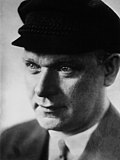

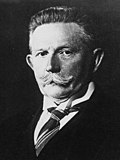
















 Full MoonImage credit: NASA/Goddard Space Flight Center Scientific Visualization Studio.
Full MoonImage credit: NASA/Goddard Space Flight Center Scientific Visualization Studio.

